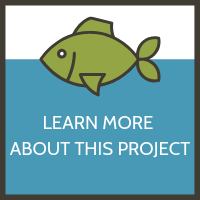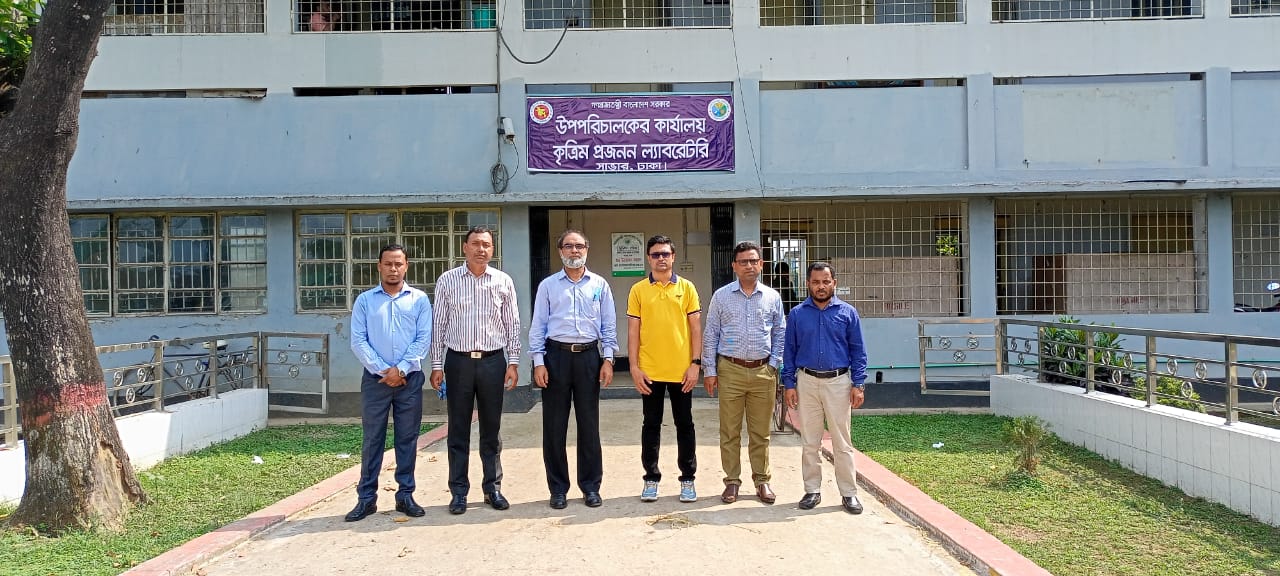
By Alaina Dismukes
The Feed the Future Innovation Lab for Fish team which works with cryogenic sperm banking of Indian major carps and exotic carps in Bangladesh recently visited the Central Artificial Insemination Center for Livestock in Dhaka, under the Department of Livestock in the Ministry of Fisheries and Livestock.
“In 2021, the artificial insemination center produced around 4 million straws that covered around 70% of the national requirement,” said Md. Rafiqul Islam Sarder, lead principal investigator of the project in Bangladesh. "Around 200 bulls of different origins are used to collect semen."
The central artificial insemination center distributes frozen semen to 22 districts along with liquid nitrogen and other materials needed for insemination, and artificial insemination technicians receive the straws from the distribution centers as needed to use them in artificial insemination at the farmer level.
“At the artificial insemination center, we observed the sperm cryopreservation and cryogenic sperm banking of bulls,” he said. “It is a big artificial insemination center from where frozen sperm are distributed all over the country. Our target was to see the cryopreservation activities as well as to understand the distribution channels.”
Md. Shane Khoda, scientific officer at the artificial insemination lab in Dhaka, presented on and demonstrated different cryopreservation techniques such as sperm quality examination, processing of sperm for cooling, handling the sperm post-thawing, and long-term storage. A straw containing frozen sperm was thawed and sperm quality was assessed using a photographic microscope.
“It is a huge establishment,” Sarder said. “Even though they work with different animals, we received ideas for our establishment of central and regional cryogenic sperm banks and development of nationwide networks for distribution of sperm. We plan to make recommendations to the government for the development of cryogenic sperm banks for fish to help continue this work even after the project is completed.”

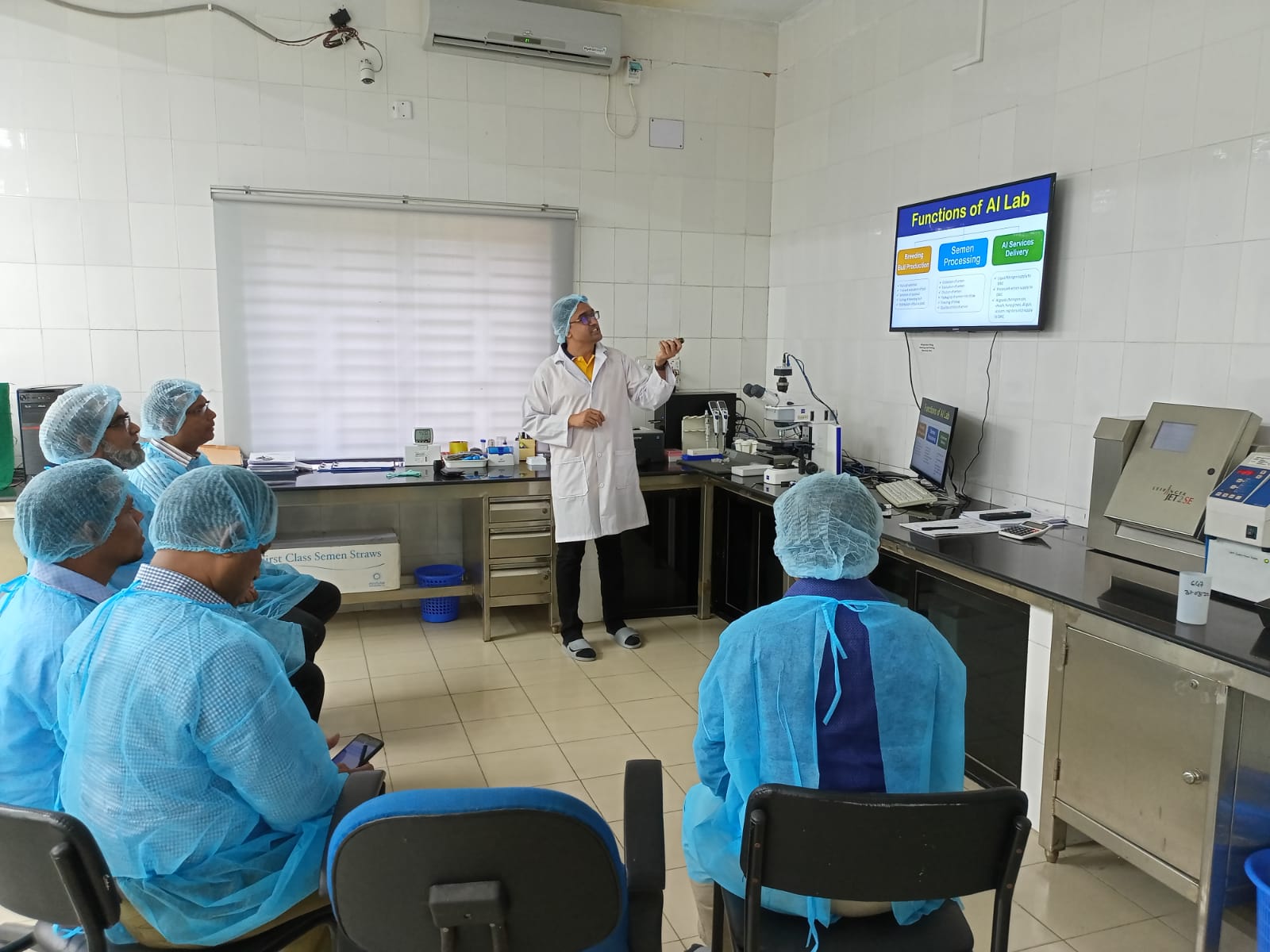
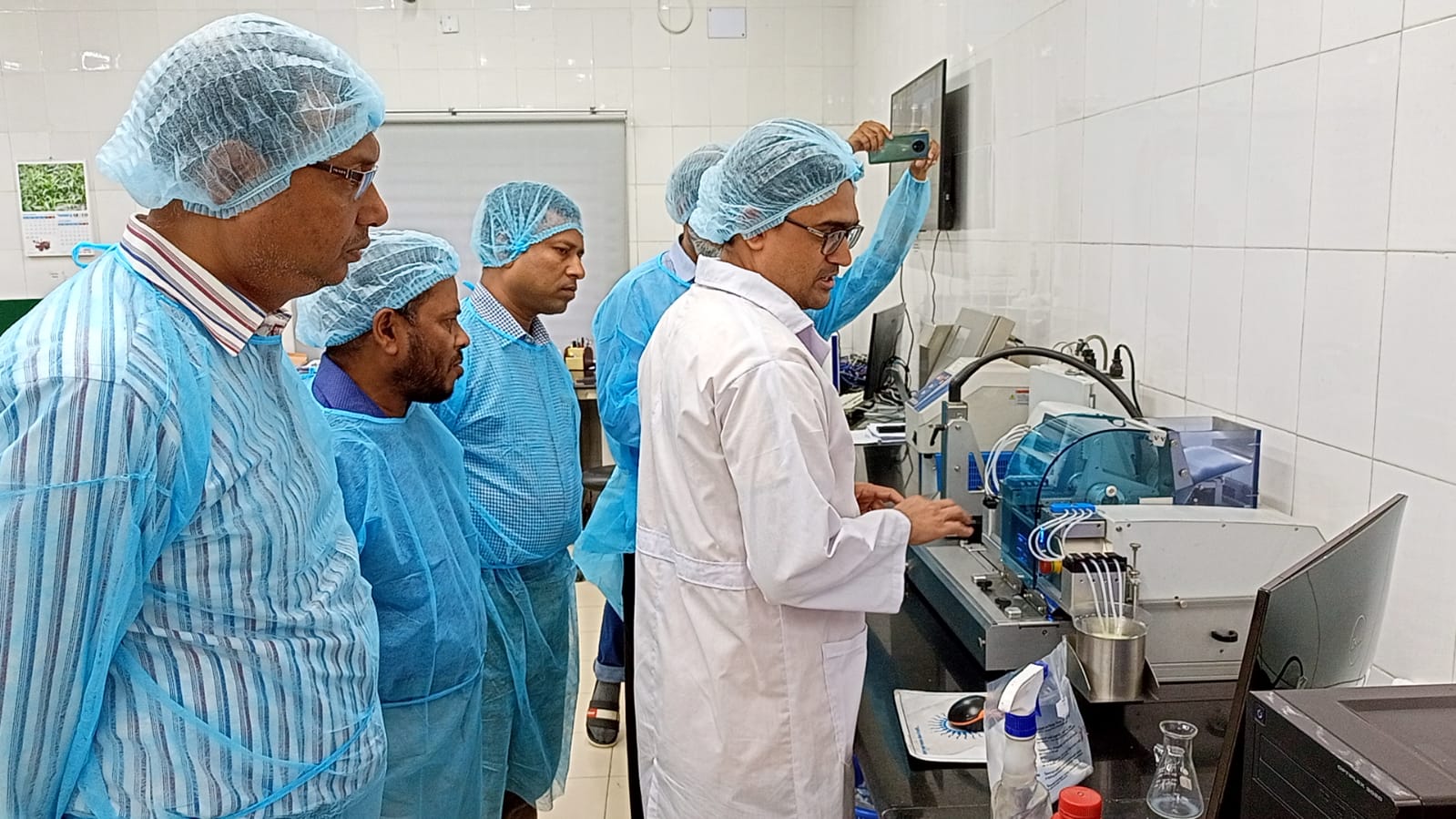
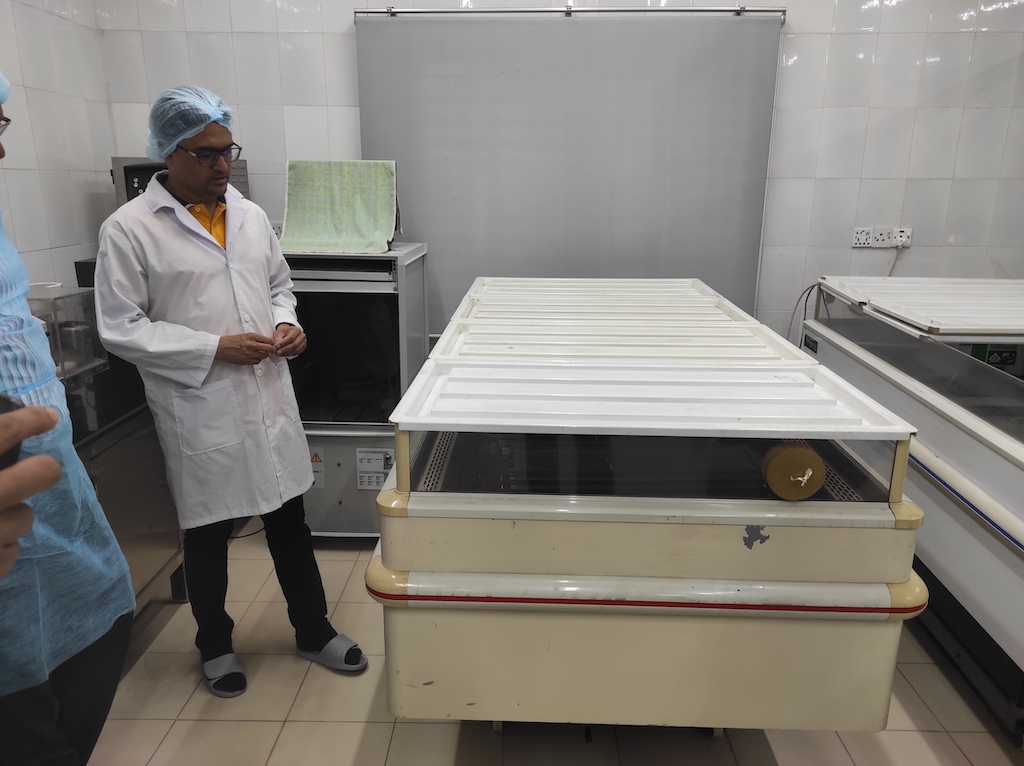
Published April 22, 2022

